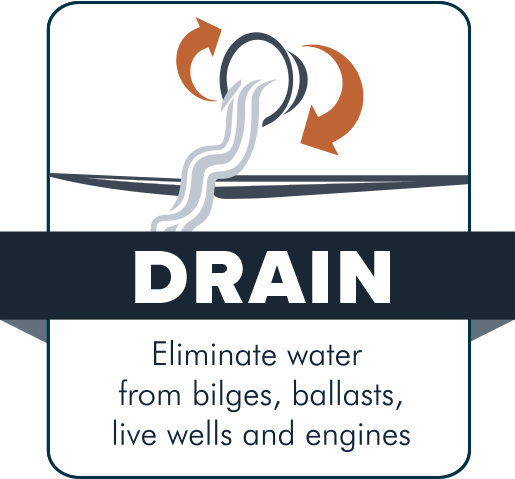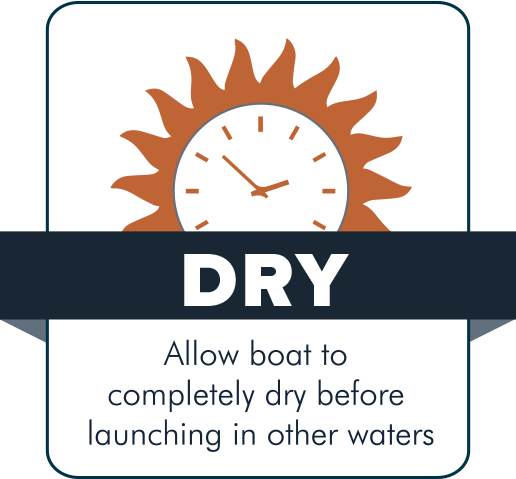Because it can take several years to determine if quagga or zebra mussels have invaded a waterbody, you can never be certain if it is affected or not. That’s why all boaters in Utah are required to know how to prevent the spread of aquatic invasive species like quagga mussels.
Generally, if your vessel requires registration with your state of residence and has a bow number, your boat is considered a motorized vessel. The following rules apply to Utah residents and non-resident boaters.
Before you launch
Each calendar year, you must complete a few requirements before launching at a Utah waterbody.
- Register your vessel with your state’s Division of Motor Vehicles (or the equivalent in any state/province for boat registration) — you will need your bow number to enroll in the Utah AIS program.
- Complete the annual DWR mussel-aware boater education course. Print out your proof of course completion or download it to your DWR Hunting and Fishing app.
- Enroll your vessel in the Utah AIS Program. An annual fee per watercraft applies: $20 for Utah residents and $25 for non-resident vessels.
- A current-year AIS decal will be mailed to you; affix it to your boat with the instructions enclosed in the mailer.
Important: You must have a professional decontamination completed before launching your vessel in any Utah waterbody — regardless of season — if:
- You are entering Utah from another state
- You have been at a mussel-infested water and not met the 30-day dry time required for complex boats (vessels containing inboard motors, inboard/outboard motors, ballast tanks, bilges, live wells, generators, AC units and any other raw water systems)
After boating
Requirements for all boaters exiting Utah waters.
- Remove all drain plugs when leaving any waterbody and when transporting watercraft.
- Self-certification process is recommended for all motorized and non-motorized watercraft and required for boats exiting a mussel-infested waterbody (if they are not having a professional decontamination performed):
- Clean: All plants, fish, mussels and mud from the vessel (discard unused bait in the trash). Remove and rinse out your sea strainer.
- Drain: All water from ballasts, bilge, livewells and motors.
- Dry:
- Spring: 18 days (March, April and May)
- Summer: 7 days (June, July and August)
- Fall: 18 days (September, October and November)
- Winter: 30 days (December, January and February)
- You can also freeze your properly winterized equipment for 72 consecutive hours (three days)
- All complex boats (vessels containing inboard motors, inboard/outboard motors, ballast tanks, bilges, live wells, generators, AC units and any other raw water systems) are subject to a 30-day dry time regardless of season.
- Professional decontamination for motorized vessels leaving a mussel-infested waterbody:
Option 1: Have a Utah Division of Wildlife Resources certified decontamination professional perform an on-site decontamination. The certified equipment and technique uses flowing hot water at temperatures high enough to eliminate quagga mussels at all life stages. Some locations have dip tanks that allow boaters to partially submerge their watercraft and trailer in high-temperature water to cycle through the boat’s onboard and outboard systems.
Option 2:
- Receive an exit inspection with a seal and a receipt in order to seek an authorized decontamination at a later time or
- Follow the above clean, drain and dry procedures (including a full 30-day dry time).
Remove all drain plugs
When leaving any waterbody and when transporting watercraft, any drain plugs must be removed.
Stop at all operating AIS inspection stations
AIS check stations may include: when entering launch areas, when leaving a body of water, or when passing a highway checkpoint or Port of Entry.
- Be prepared to show proof of completion of the annual mussel-aware boater education course (a print copy or downloaded to your DWR Hunting and Fishing app) and have a current-year AIS decal affixed to your boat.
- Even if you’ve previously stopped at an AIS check station, you must stop at any others you may encounter while in transit.
- If a check station is closed, you are not required to stop.



If your boat has ballast tanks, an inboard motor or other raw water systems (A/C, shower), the required dry time is always 30 days.
If your watercraft does not have any of the above systems, the dry times are:
- Summer: 7 days in June–August
- Fall: 18 days in September–November
- Winter: 30 days in December–February
- Spring: 18 days in March–May
You should routinely self-decontaminate after every boating excursion out of precaution, even if you were not in a known quagga-infested water.
See the live AIS inspection statistics dashboard to learn more about AIS-prevention measures in Utah.